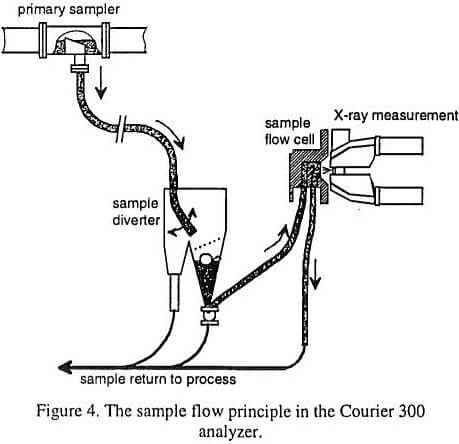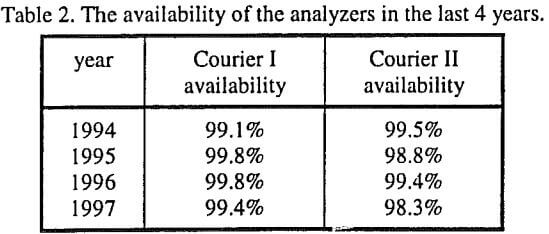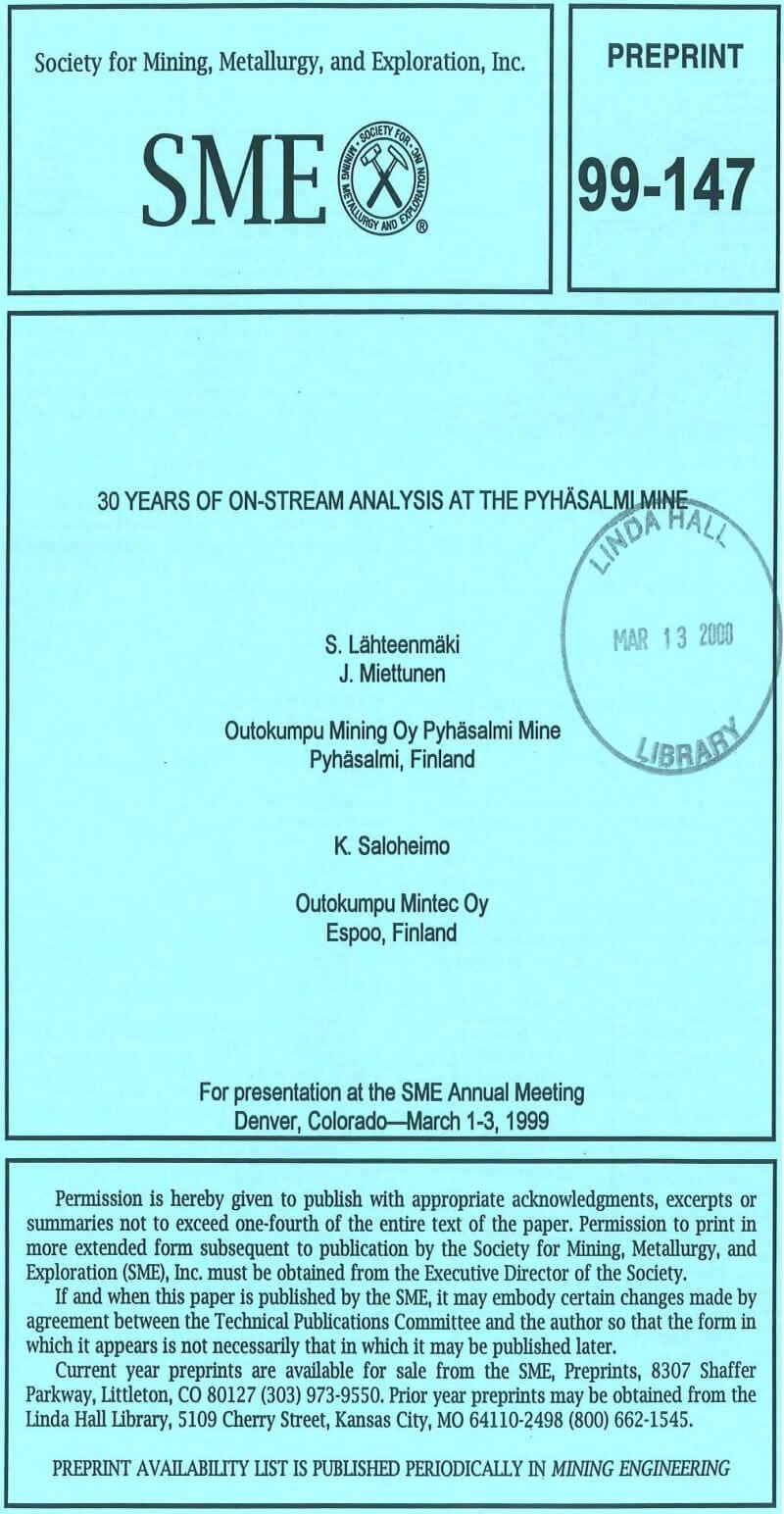
The principle of the sample flows of the analyzer system is shown in Figure 4. As the analyzers are located in a separate room, many of the primary lines require pumping. The samples are returned mostly by gravity to the corresponding process pump sumps.
The primary sample lines have a diverter that feeds the stream to the flow cell for analysis. This secondary sample flow is driven by suction. If the flow cell window is broken the siphon stops automatically. A trash screen at the diverter ensures that the secondary flow is not blocked and the open surface of the feeding tank removes entrained air from the pulp. The X-ray fluorescence measurement head traverses between the 14 sample flow cells of each analyzer.
The analysis is performed by a wavelength dispersive X-ray fluorescence analysis system (Jenkins et al., 1995), excited by a 1500 Watt X-ray tube. The sample cell flow geometry is designed to provide a good representation of all particle size fractions of the sample in the close vicinity of the cell window. The analysis device incorporates altogether five wavelength dispersive channels. The element fluorescence lines are measured for Fe, Cu, Zn and Pb, and the Compton scatter of the X-ray tube emission line takes up the fifth channel.
The intensities are converted to assays by calibration equations obtained in a calibration campaign. The models are adjusted by bias type corrections based on the composite sample analyses and corresponding averages. The last complete calibration check was carried out in 1989 and there has not been considerable drift since then. The normalization of the measured intensities based on an automatic reference measurement compensates for changes in the analysis system.
Figure 5 shows examples of the calibration of the feed, concentrate and tailings of the Cu flotation circuit.
The system provides assays of each sample line in 6 to 7 minutes. This is an adequate frequency for real-time process control. Thus ca. 1000 assays are generated each hour and fed to the Proscon 2100 automation system.
Availability and maintenance
The Proscon automation system records the availability of the assays of all sample lines. During summer-autumn 1998 the availability ranged from 92% to 99%, the average being 97%. These figures included the operation of primary samplers, sample transport lines and analysis equipment whenever the process was running. The analyzer availability is followed on a yearly basis. Table 2 shows the statistics in the past 4 years

The high availability figures are a result of many factors. Above all, since the assays are crucial to the process control, keeping the analyzer running is important to the plant. This is underlined by the fact that the production bonuses of the plant personnel are tied to the economical results and also partly to the availability of the analyses.
The sampling solutions over the 30 years of operation are a result of systematic development and focusing to the items causing the most problems. Nowadays the largest group of failures, about one third, is related to the pumping of the slurry.

The analyzers and sampling take up about 0.5 hrs. of work of the plant operators per shift. The 6-month preventive maintenance procedure included in the service contract comprises a thorough check of the analyzer. This has ensured that a need for emergency service calls has been extremely rare.

